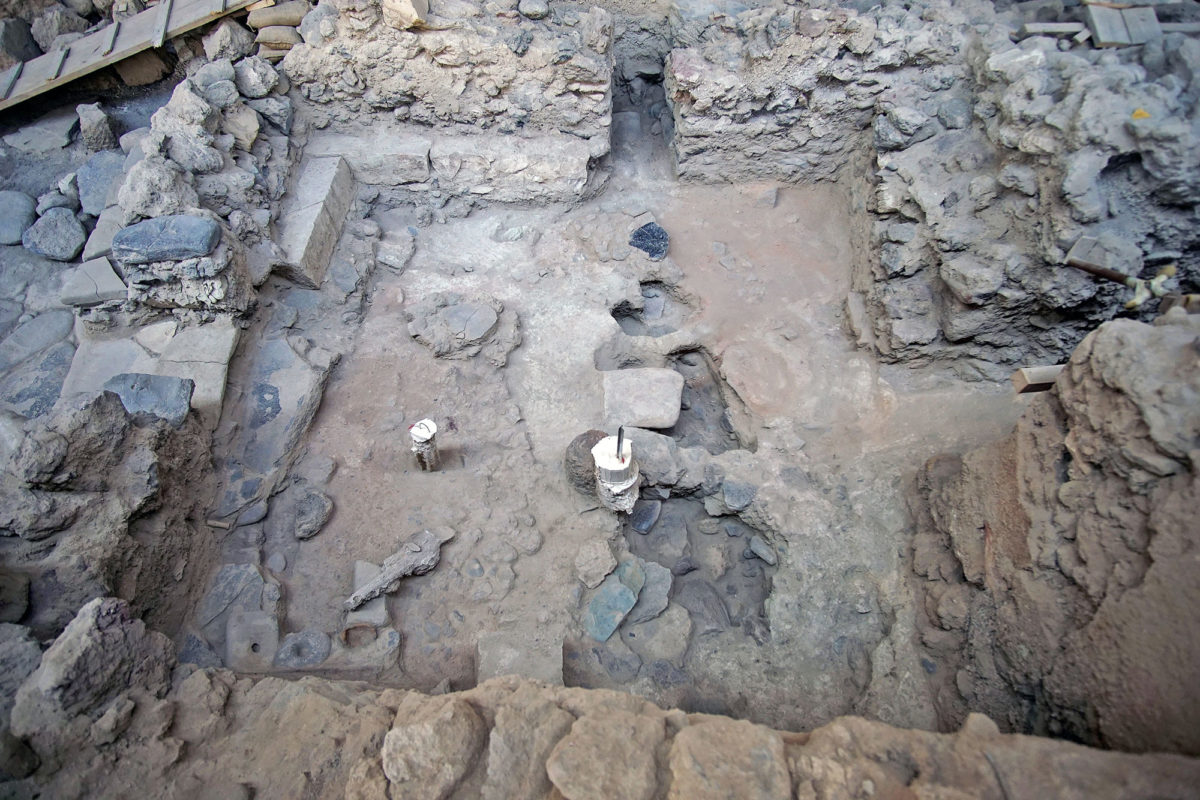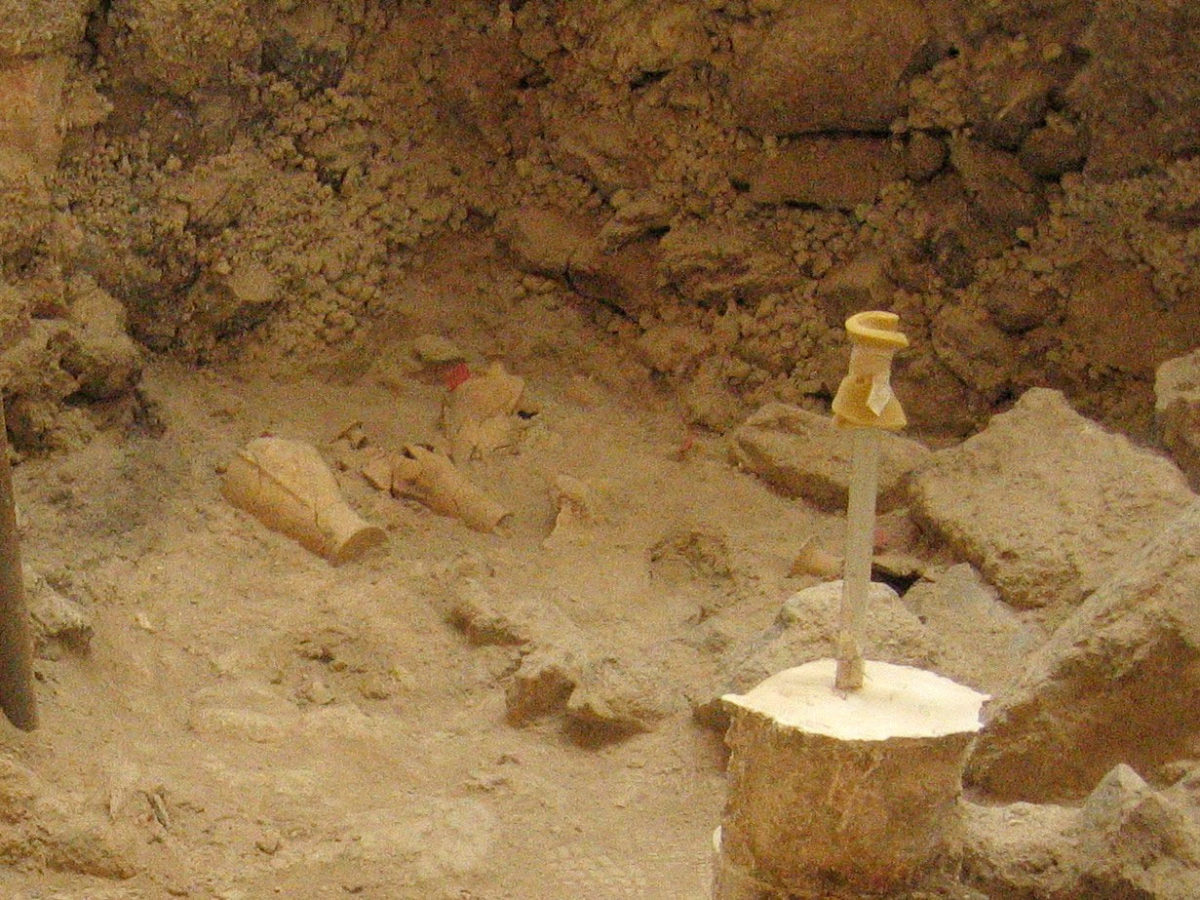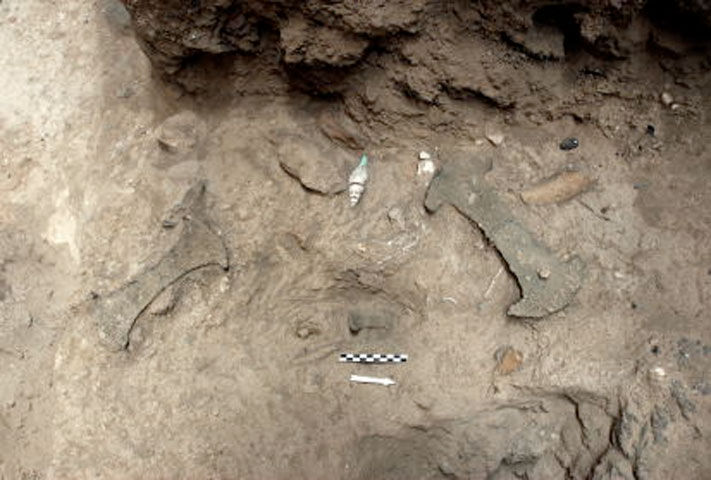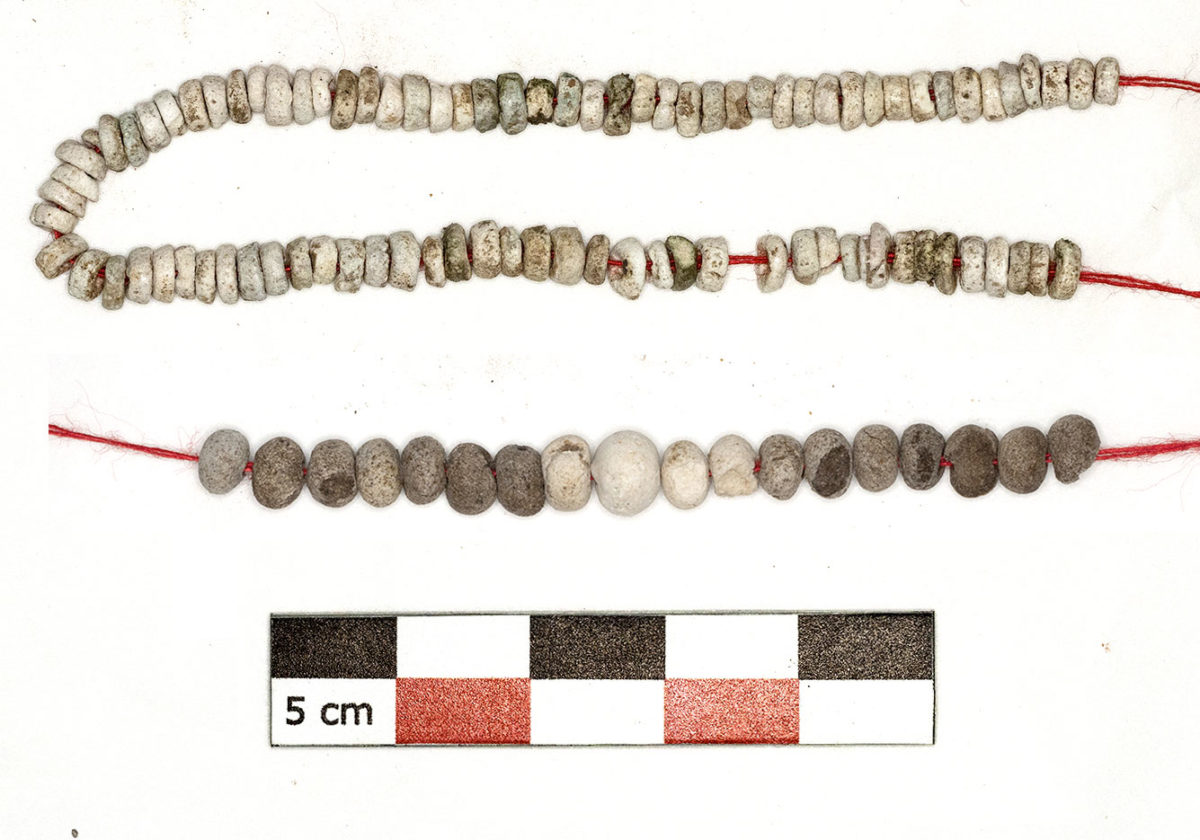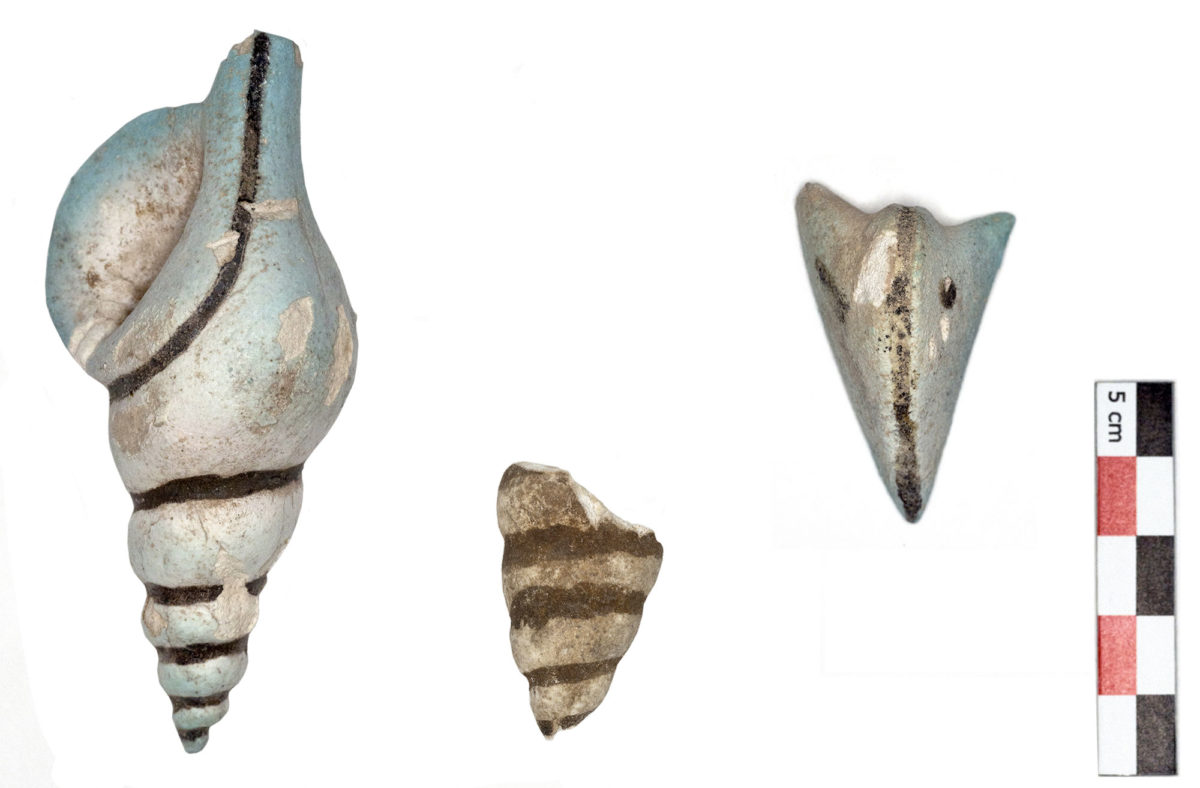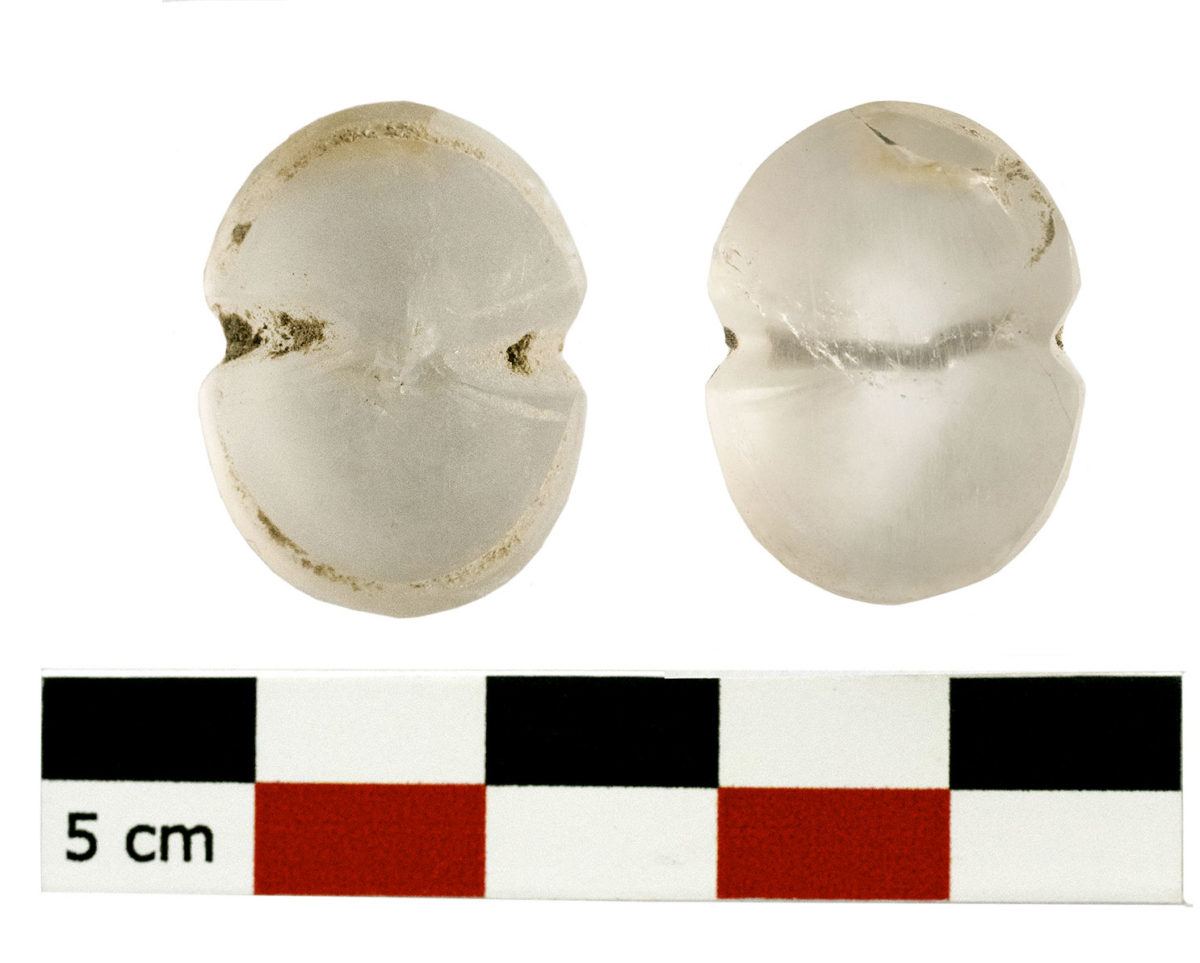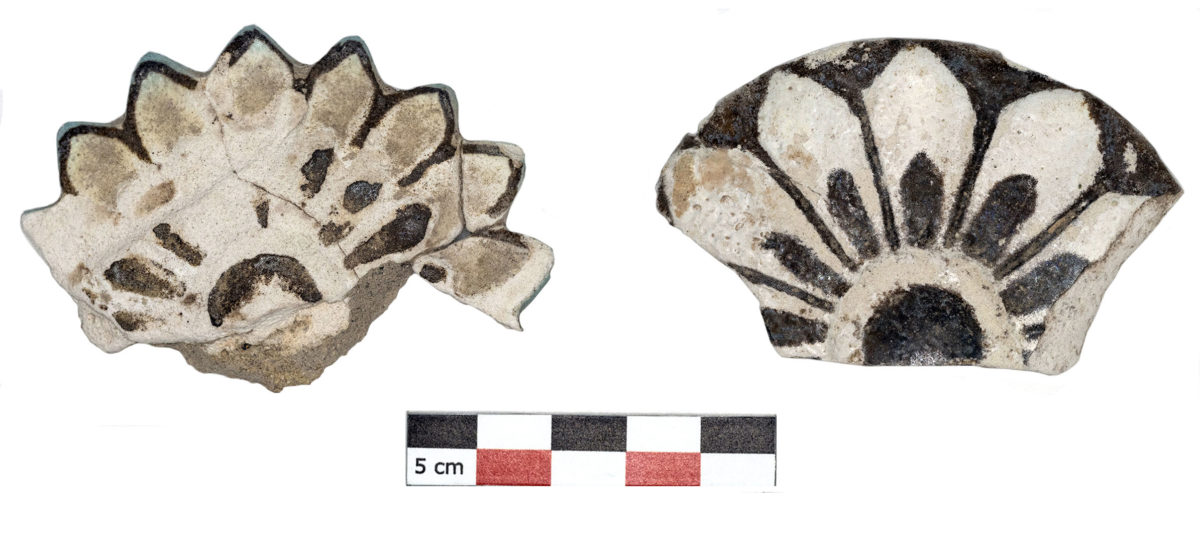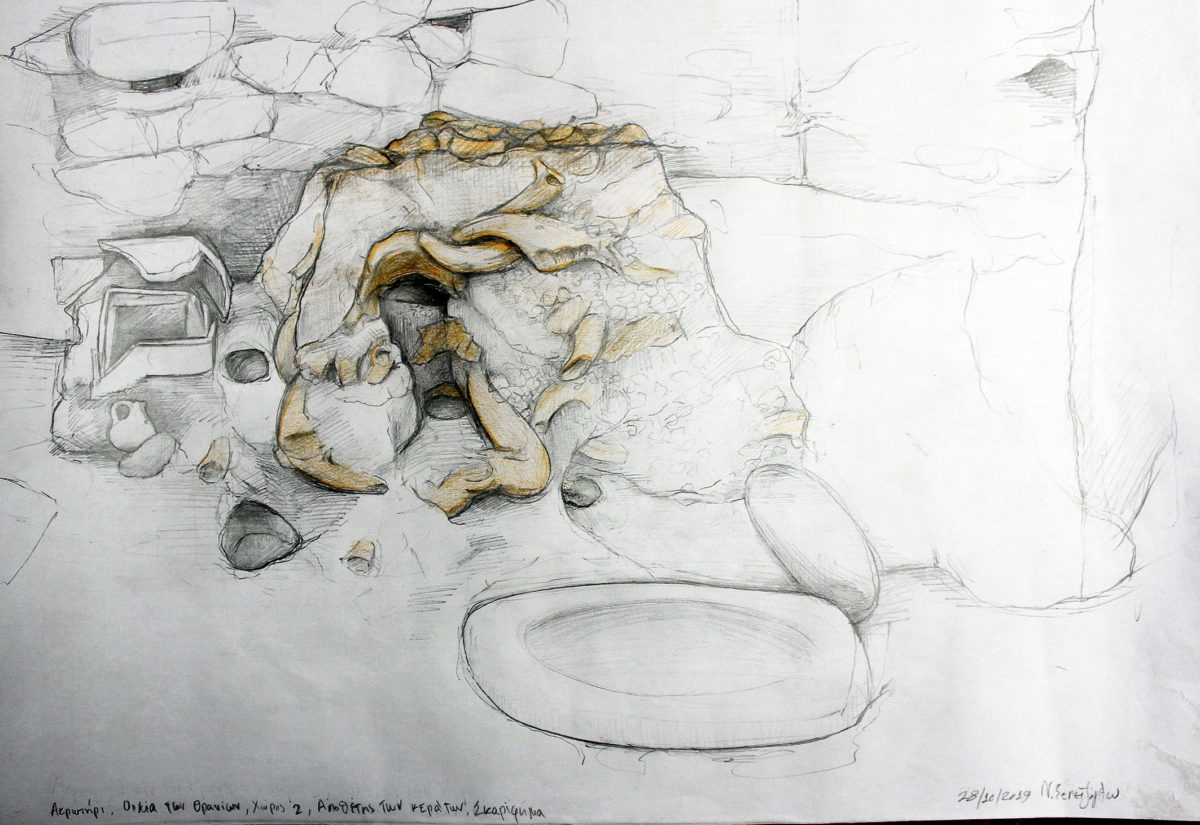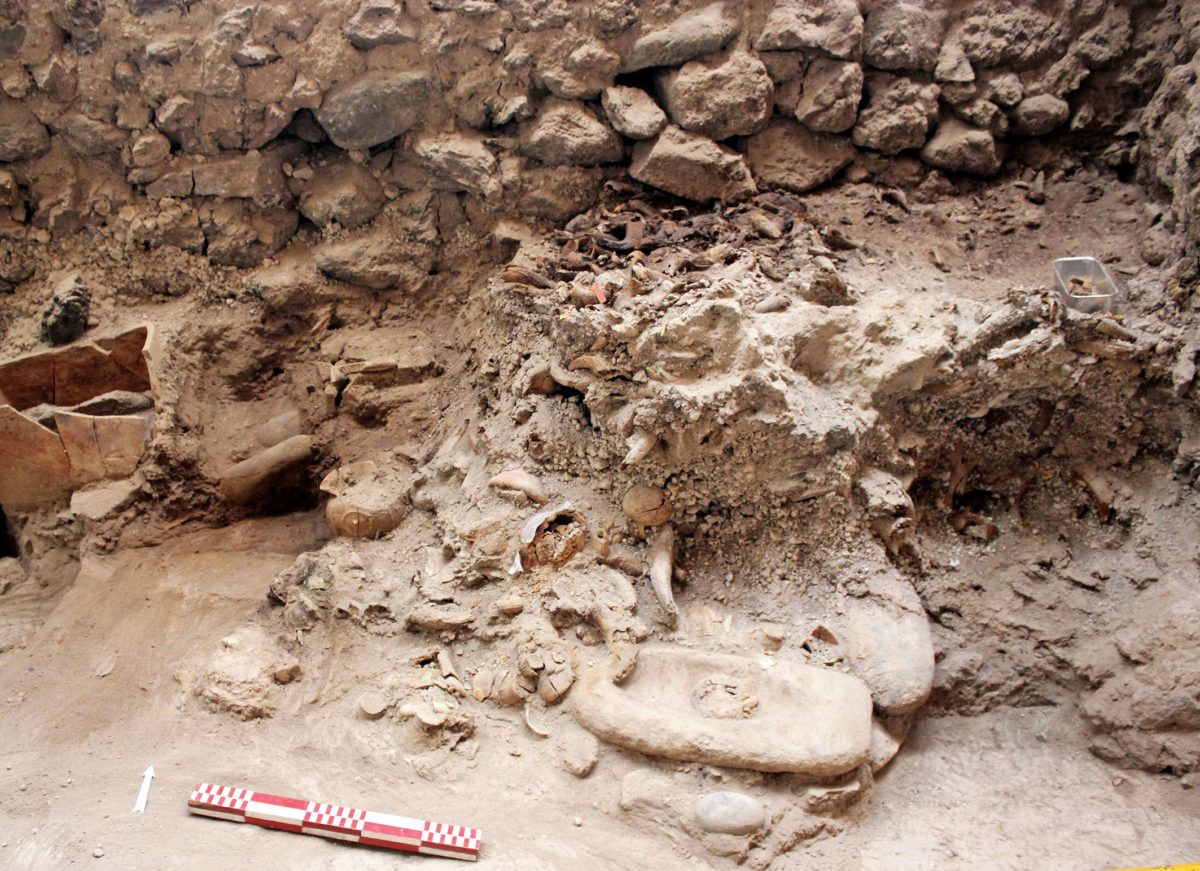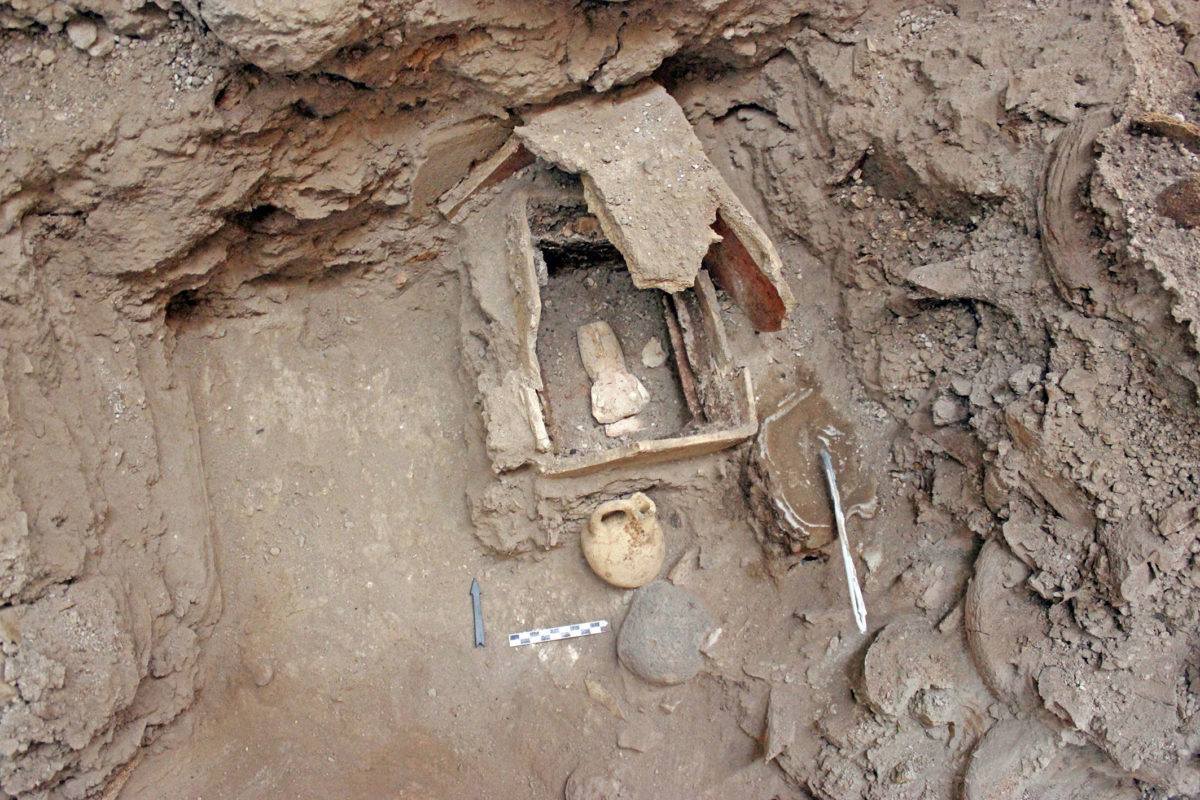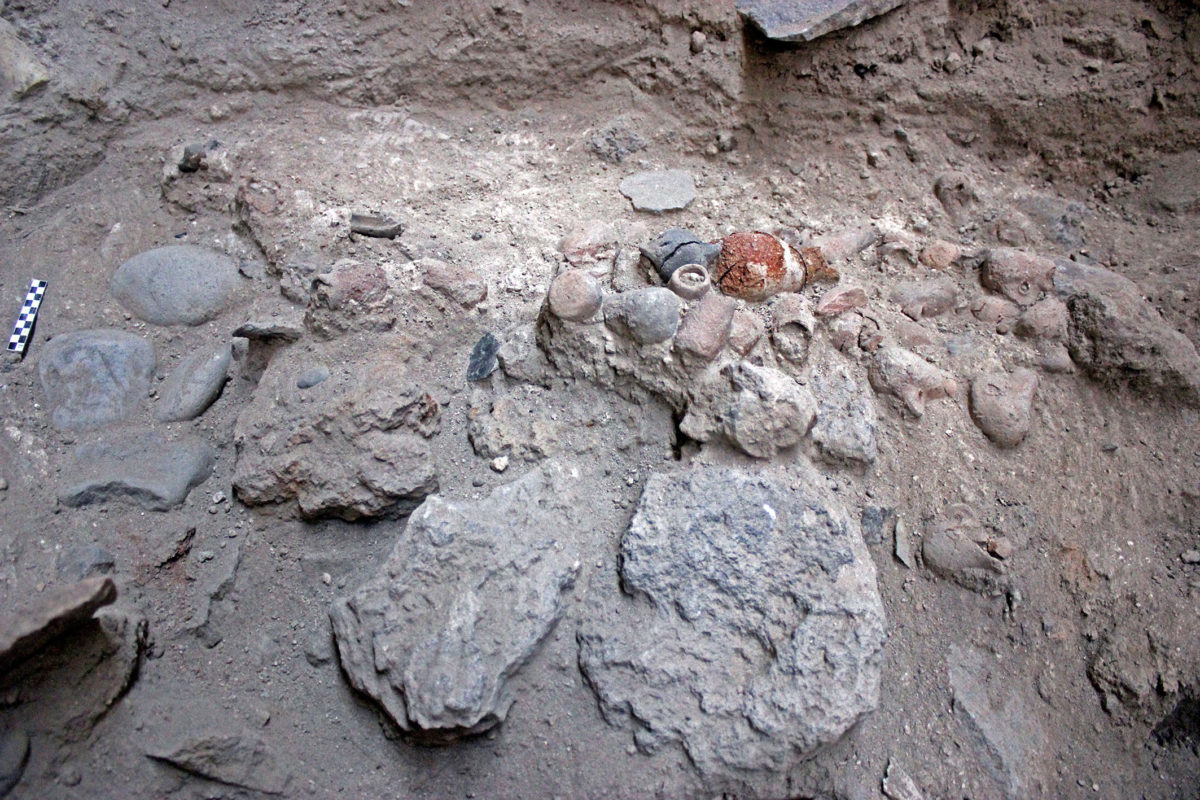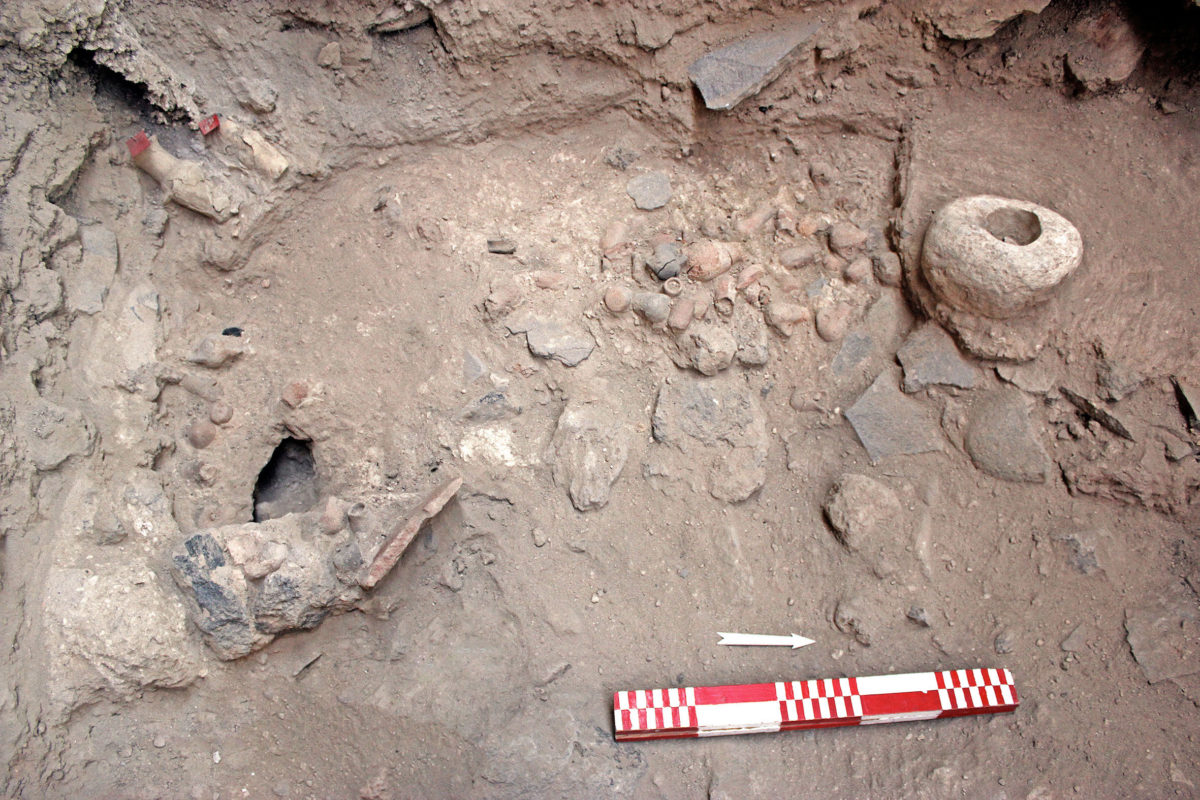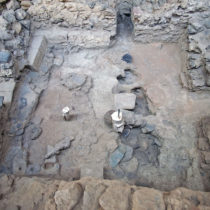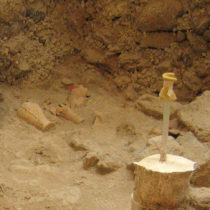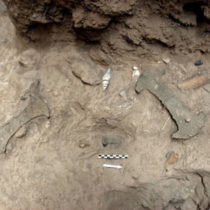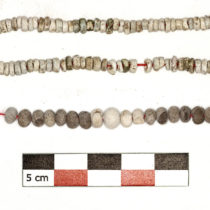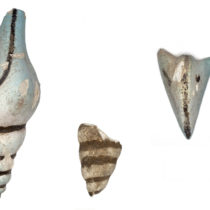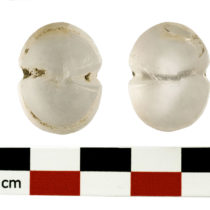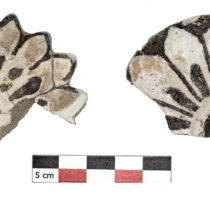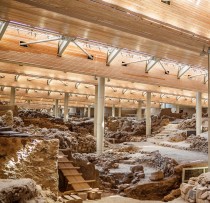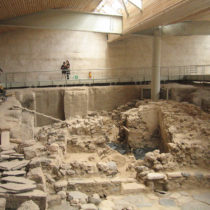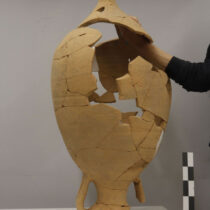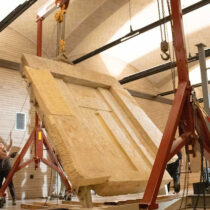Highly significant new data was unearthed during ongoing excavation work at Akrotiri on Thera, under the auspices of the Archaeological Society headed by Professor Emeritus Christos Doumas. The excavation is being carried out under the supervision of the Cyclades Ephorate of Antiquities and funded by the Kaspersky company.
In the interior of the building, known as the “House of Benches” (fig. 1), which was most probably a public one, was where the famous golden ibex had been found in 1999 and is now exhibited in the Museum of Prehistoric Thera. It was placed inside a clay larnax next to a pile of animal horns. In 2019, an unexpected large number of unique findings was found under the disaster deposits:
In Area 1, four ribbed vessels were brought to light that had been partially unearthed in earlier excavations (fig. 2), as well as bronze objects, such as two large double axes made of a very thin sheet of bronze as well as others in miniature (fig. 3), inner cores of horns and minute beads from one or more necklaces (fig. 4). Also, faience imitations of a triton shell and a nautilus (fig. 5), a bead of rock crystal shaped like a figure eight shield (fig. 6), with remains of red thread through its hole. The above objects were found under the imprint of a wooden construction and may have been hanging on it. Lastly, rosettes (fig. 7) were found in the backfills of the door openings of Area 1, possibly coverings of wooden elements. An inscribed fragment of the likeness of a triton is particularly emblematic. The inscription, consisting of Linear A syllabograms and an ideogram, is written in ink and is likely to be related to the use of the building.
Loose layers of sea sand with small pebbles, gravel and soil on the floor of Area 1 were attributed by geologist G. Vougioukalakis to deposits of a tidal wave (tsunami) that preceded the volcanic eruption.
In Area 2, on the perimeter of the south and west flanks of the Depositor of Horns, sockets for at least six wooden piles were discovered, in which plaster had been poured to create casts. The excavation data shows that the piles created a kind of grid on which the horns were deposited (fig. 8). Found at the base of this grid, mixed with horns, were stone tools and utensils (fig. 9), such as 43 small open vessels and two closed ones, while right next to them lay remains of cloth and carbonized fruits. The dating of some vessels from the Late Cycladic 1a period confirms that the building was in use and functioning until the city’s final destruction.
To the west of the Deposit of Horns another pair of small clay boxes were unearthed with the larger being upside down. The smaller box was stored inside it, in which in turn a wooden box had been sunk into clay mortar, as shown by its imprint. Kept inside this box was a marble Proto-Cycladic female figurine of the Spedos type in a supine position, missing the neck and head and the legs from below the knees. The inner surfaces of both the small clay containers and the wooden box are coated with a vivid red colour (fig. 10).
In the southwestern part of Area 2, under broken flagstones, fragments of stone tools and sea pebbles, two clusters of miniature Proto-Cycladic vessels came to light. One consisted of 16 vessels placed around a wooden object (fig. 11), whose shape will hopefully be established after the plaster cast of its imprint has been lifted. The second cluster consisted of 131 miniature vessels inside a shallow cavity in the floor (fig. 12).
Similar types of vessels have been found both in the greater area of the House of Benches and in the earlier phase of the settlement below the Cenotaph Square—a district that was probably associated with a burial cult. The small size and number of these vessels, their coarse construction and the complete absence of Proto-Cycladic graves similar as to their burial offerings, indicate that they were mass-produced utensils for a specific purpose. Their concentration in the above places with an intense symbolism, points to their being drinking vessels used during mass rituals.
It is obvious that the ongoing investigation of the House of Benches on the southern edge of the prehistoric city of Akrotiri, next to Xeste 3—the important public building with its rich fresco decoration—is expected to reveal a host of new information that will give fresh impetus to interpreting essential questions on prehistoric Aegean society.
